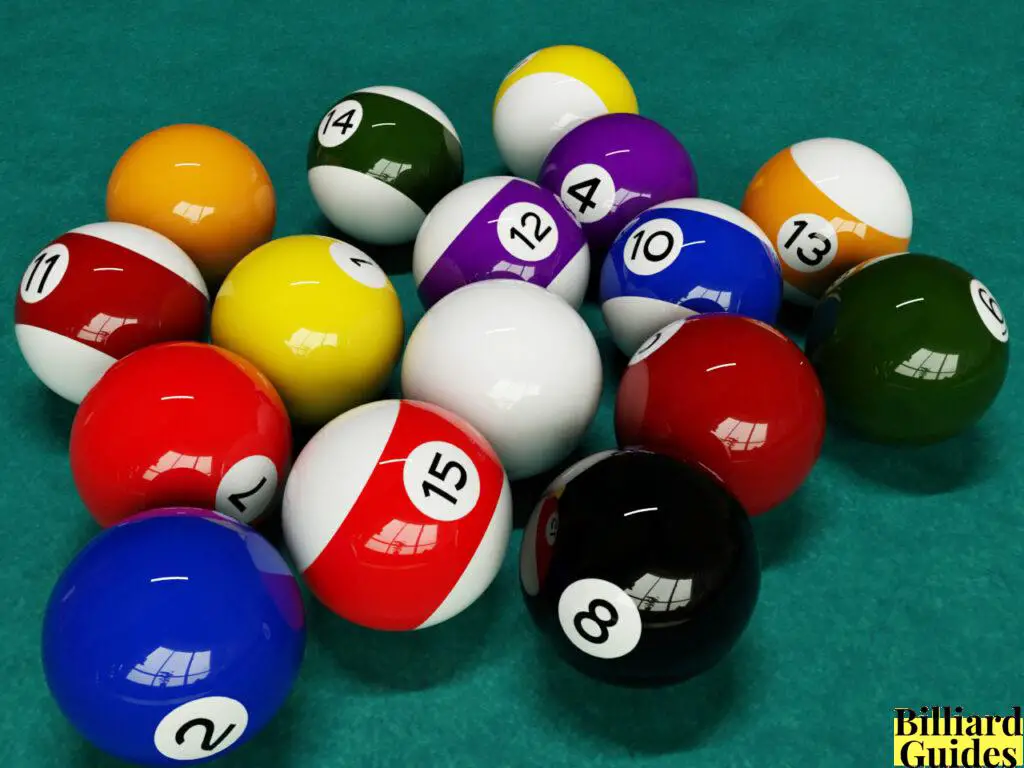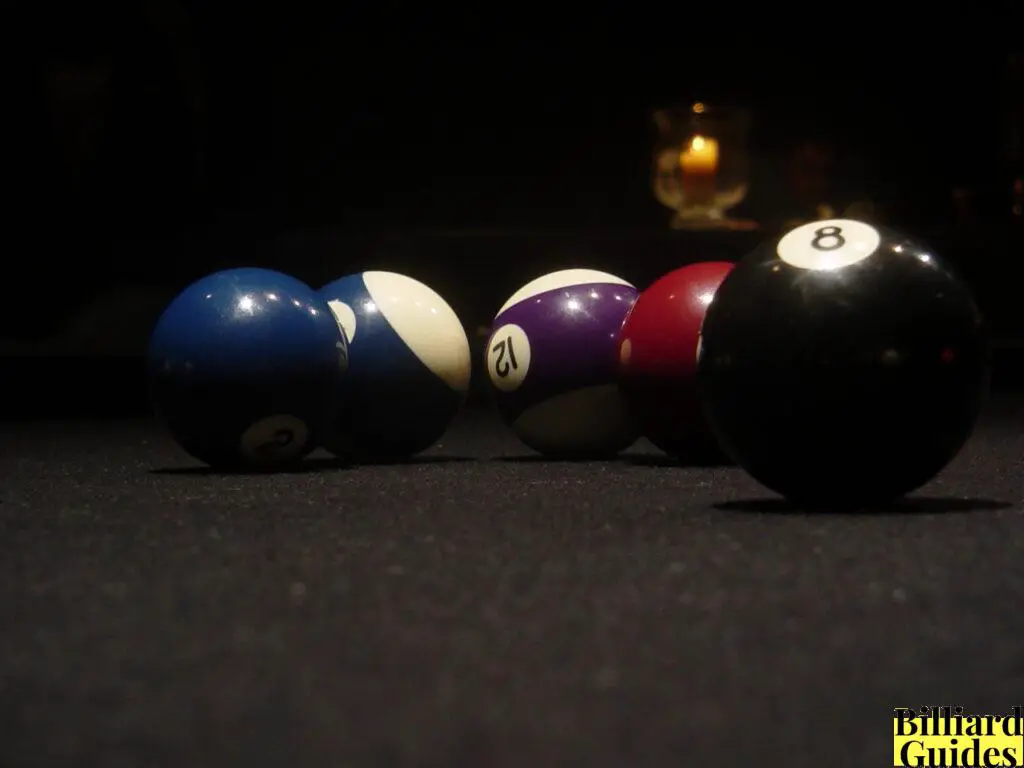The cutthroat pool is a game of the same name, but with different rules than other games.
The goal of this game is to be the last person standing after all others have been eliminated by being sunk in one or more pockets. The winner can either sink all their opponents’ balls before they have sunk themselves or run out of legal shots while having at least one ball left on the table.
This type of pool has no restrictions on how many times you may hit each ball and players are not required to call any fouls that they commit. Balls must go into a pocket to count as a point; if only part of an object ball goes into a pocket it doesn’t count unless it’s because another player caused them to do so.

Rules of Cutthroat Pool
The following are the rules of the cutthroat pool according to Billiard Guides, with some small differences from how it is actually played.
1. The game begins when each player has a cue ball on their side of the table and object balls on their intended pockets. Each player will then take turns saying the word “break.”
2. Each player is allowed to ‘bank’ the balls off of any rail before shooting into a pocket, but if they pocket an object ball off of a bank and it does not hit another object ball on its way down, the shot counts as a foul and players will continue to play with their opponent taking their turn at the table.
2a. If a player banks off of one or more other object balls, they are allowed to have their opponent re-rack the balls. After being re-racked, the player who was forced to rack must take their shot first and cannot shoot until it is clear that they will not cause their own object ball to be pocketed.
2b. When a player pockets another player’s object ball(s) on the same shot that they sink their own, all balls from both players’ previous turns must be re-racked and this continues until one of the players gets rid of all their ball(s) either legally or illegally.
3. Players may shoot any of their balls into any pocket on the table, whether it is their own or not.
3a. A player shooting with no other object ball besides their own can ‘stun’ themselves while shooting by having their cue tip strike the cushion of the table behind them, though this counts as a foul if another player gets hit by the cue tip in the process.
3b. Players may not necessarily shoot their own ball into any pocket; they can attempt to ‘stun’ themselves by having their cue tip strike the cushion of the table behind them in order to hit another player’s object ball and knock it into a pocket (this is called a “back-scratcher”). This counts as a legal shot.
3c. Players are allowed to hit each others’ object balls when shooting once they have pocketed their own ball, but if they accidentally pocket another player’s ball(s) in the same shot that they sink their own without hitting an additional object ball first, it counts as a foul and is one of the few things in the rules of the cutthroat pool that is considered a “miscue.”
3d. If a player shoots and misses all other balls on the table, he may shoot again.
4. It doesn’t matter what order players pocket their object balls; it only matters who pockets them first and if they do so legally or illegally. Balls do not have to go into the same pocket in order to be considered sunk at the same time.
5. The first player who successfully sinks all balls on their side of the table is declared the winner, or they are eliminated if someone else gets rid of all their balls before them. When only one person is left with at least one ball on their side of the table, they win and the game is over.
6. If a player pockets their own object ball with another one still on the table, they must choose to either put the first back into play where it was or leave it as an extra point for themselves (it can be legally pocketed again). Players cannot shoot after pocketing their own ball if their only remaining balls are on the table.
7. The winner of the game is determined by whoever legally pockets all 7 object balls first, not necessarily who gets rid of all their own balls first. If both players get down to just one or more than 4 balls each still on their side of the table, whoever shoots first will win.
8. Each game of cutthroat pool may be played ‘best out of 5’ or ‘first to 3,’ though other rules can be changed if players come up with them themselves. Two object balls must also be used instead of six when playing cutthroat pool unless more than 8 people are playing in which case a larger table and smaller pockets should be used.
8a. When playing cutthroat pool with only two players, the winner of each game is allowed to choose their own object ball that will remain on their side of the table for use in all future games. The other player must use the same ball as them until they win.
8b. The eight ball cannot be used in the cutthroat pool unless both players/teams are down to only one ball each. If this is the case, whoever legally pockets the eight ball wins no matter who has more balls left on their side of the table or not.
How Cutthroat Pool Differs from Regular Eight Ball

In cutthroat eight ball, all object balls must be pocketed before a player can legally shoot at the eight ball for the win. In a regular pool, as long as a player sinks their last ball they don’t have to hit any other balls first in order to win. In cutthroat pool, if a player is down to just one ball and pockets it, they automatically win the game. This is why the eight ball cannot be used in cutthroat pool unless both players/teams are down to just one ball each. Play continues until all but one player sinks their last remaining object balls and legally pockets the eight ball for a win.
Additional Notes:
-It’s probably best for new players to play with at least four balls in cutthroat pool, but two is fine.
-Players are allowed to take shots at other people’s object balls when shooting if they don’t have any of their own remaining on the table. Players are not allowed to hit this ball if it would scratch or violate any other rules (i.e. hitting the eight ball).
-It’s best to play with six balls in a cutthroat pool, but this can be adjusted if there are more or less than six people playing at once; simply use one less/more ball when playing a cutthroat pool with an odd number of players.
Tips to play better in Cutthroat Pool
The two most important tips when playing cutthroat pool is to pay attention to how many balls are still on the table and what your opponent’s strategy is. If you have a lot of balls on the table, it might be a good idea to save a ball or two for later so that you can get rid of more of them at once.
If your opponent has a lot of balls on the table, try to pocket some shots that they don’t think they’ll make. This will make them leave their remaining balls vulnerable to your own shots.
Also, when you’re about to pocket a ball it’s important to know where the cue ball is at all times in case you scratch or hit something else than just the object ball. If this happens, not only do you lose the shot but also any other balls that you were going to shoot at afterward.
For more info on how to play cutthroat pool, look up the official rules of the game online or ask a more experienced player for tips and strategies.
Why you should try playing Cutthroat Pool
The cutthroat pool is a great way to see how good your pool skills are.
It’s also a great way to learn about strategy and how different strategies can change the course of a game.
Additionally, it’s a fun way to play with friends or family that don’t have as much experience playing other types of pool games.
Conclusion
If you’ve always been curious about why the cutthroat pool is different from regular eight-ball, this article has the answers. We also provided some helpful tips for playing better in the cutthroat pools and why it might be worth trying out.
If you want to learn more about how cutthroat pool works or if you’re ready to give it a try yourself, contact us today! Our team of professionals is happy to answer any questions that you may have online at your convenience.